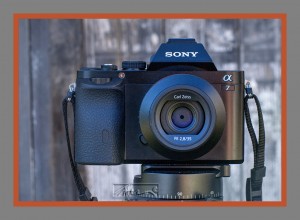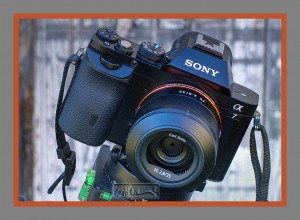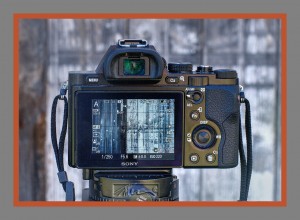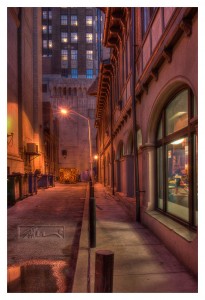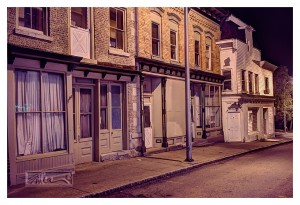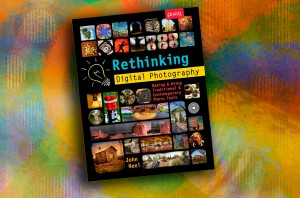This is the first of several posts that I plan to write about this camera.
The Sony a7 comes pretty darn close to being what I think is a pretty perfect camera. To be totally honest, I really love this camera.
Cameras are tools that need to meet the terms of our vision. A great camera becomes an extension of our eyes. A really great camera allows us to capture the world intuitively and spontaneously.
Please read: Disclosure
It is hard to define what the perfect camera might be. We all have our own ideas, which are usually based on our particular ways of working. What feels good to one may not meet the expectations of another. That is one of the reasons we have so many choices.
Until now, I have found most of those camera choices somewhat disappointing. Most of them are too big and bulky, overly complex, too conspicuous, or overrun with ill-placed buttons and controls. Many are just not right for my kind of shooting.
But for me, this little gem just may be the ultimate camera. What I know at this point is that this pretty little camera feels like it was made especially for me.
To be honest, I was a bit doubtful that the Sony A7 would be a camera that could do all the things I wanted it to do photographically. How could such a tiny, lightweight camera fulfill all of the difficult tasks I wanted, needed or wished for in a digital camera? Turns out, that it is very capable.
As it turns out, it is a very well designed camera that is particularly adept at doing most everything I have been looking for, and then some. This is an amazing camera. Not only is it an amazing feat of full-frame engineering, it is agile, light weight, well balanced, feels great in the hands, it is perfectly laid out in terms of buttons and dials, and to top it off, it is aesthetically beautiful to me.
I had waited for this camera to arrive from Sony for a few months. There was a large backlog of reviewers that were looking to do their own reviews of this exciting new camera. I had to be patient and wait before I could get my hands around one. Finally, it arrived and I am completely stoked that it did. While I had hoped for the larger 36 megapixel sensor, the a7r, the 24 megapixel a7 did not disappoint in any way. In fact, I found it produced amazingly beautiful and highly detailed images.
Sony sent the camera packaged with a Zeiss Sonnar 35-mm prime for the review, rather than the usual zoom. I am very pleased that it did because it allowed me to return to my old days of using a prime lens rather than a zoom. It is the way I used to work when shooting on the street. Suddenly, I was seeing my subjects according to the perspective of a full-frame 35-mm lens again. It was great. I really think I see best in that format. I see best when my vision is wrapped in the same perspective as the lens in use.
I have always felt that the 35-mm focal length produces a more normal perspective than the 50-mm on a full-frame camera. One gets used to being at a certain distance from the subject rather than simply zooming to get the shot. One’s legs can be the best zooms you have. I can shoot from the hip. I stand at the right distance. My images become more spontaneous. I feel more alert and more responsive when I know what the camera is prepared to capture. With the 35, the camera sees things the way I see things. I can imagine the final image before I bring the camera to my eye. When I am shooting I feel a little more like Bresson or Winogrand.
Please read: Disclosure
I love this lens. I love that it mimics my natural vision. I feel closer to the camera because it captures what I am seeing. It also has an unassuming presence that is not intimidating to the human subjects I find in the streets. The unobtrusive lens and the small size of the camera work to my advantage.
The design of the lens hood also adds to the camera’s stealthiness. Rather than an obnoxious petal design, the well designed hood seems more like an open-faced lens cap. It never got in the way or snagged on anything while in use. It also did a great job of reducing extraneous light. The designers did a great job of reducing the size while increasing its effectiveness and aesthetics.
Despite its petite size, the Sony a7 has a feel that conforms nicely to my large hands. The grip is very comfortable. It is by far, the best grip of any small camera I know of without feeling undersized and awkward. Unlike most small cameras, the Sony a7 doesn’t crowd the fingers of the right hand between the lens and the grip or restrict the use of all five fingers when trying to hold the camera steady. With other cameras, my last two fingers seem to fall off the bottom of the grip. With the Sony, I feel that I have a comfortably grasp that feels perfectly natural and secure.
The layout of buttons and dials is very intuitive and well-thought-out. Everything you need to adjust is done by the right hand. Everything seems to be in easy reach of the thumb and forefinger, making it a cinch to control the dials for shutter and aperture as well as other functions. In fact, every control on the camera that is used during the shooting is found on the right hand side and falls where I expect them to be.
The only button requirement for the left hand is the menu, which again is in the right position and out of the way of other shooting controls. That means that the left hand is free to support the camera and to make manual focusing or zoom adjustments.
Note: There are only a few very small things that I would add to this camera if I could. One of them, which is a gripe I have with many digital cameras, would be a way to allow controlled long exposure times of more than 30 seconds. For many of my night shots especially, I could use longer exposures. While the bulb setting works, you need a way to control it without having to press the shutter release for the entire length of the exposure. Not sure why manufacturers don’t allow a longer timed exposure than a half a minute. I would think it would be a simple upgrade to the camera software. I am hoping that Sony will add this soon.
During the review period, I showed the camera to a number of photographers. At least one of them was so impressed that they immediately purchased an a7r for landscape work.
After comparison with my friends camera, I found both the a7 and the a7r to be very professional level instruments.
I found the Sony a7 to be a much better camera than I had expected it to be. Although I have used many mirrorless cameras in the past, the a7 has altered my thinking about what mirrorless cameras can accomplish. For myself, the a7 appears to be the camera I have been dreaming of for a long time. I found it a total joy to use and it is my intention to be using one of these as my main camera in the very near future. I found it to be that good.
If you are looking for a great street camera, landscape shooter, portrait maker, or a fantastic option to your DSLR, the a7 is, at least for me, a pretty perfect camera. It does just about everything I need it to do for nearly all of the photography I love to shoot. And it does it pretty darn well.
There are simply too many good things I want to discuss about using this camera to write about in this post. I’ll be writing at least a few more articles about my experience with this incredible camera over the next few weeks. Look for my posts about the cool things this cameras can do and how I used it to create some of my work.
I really do love this camera.
I cover many photographic topics and techniques in my book. – Great Photography book for any creative Photographer.
Rethinking Digital Photography – John Neel
NOTICE of Copyright: THIS POSTING AS WELL AS ALL PHOTOGRAPHS, GALLERY IMAGES, AND ILLUSTRATIONS ARE COPYRIGHT © JOHN NEEL AND ARE NOT TO BE USED FOR ANY PURPOSE WITHOUT WRITTEN CONSENT FROM THE WRITER, THE PHOTOGRAPHER AND/OR lensgarden.com. THE IDEAS EXPRESSED ARE THE PROPERTY OF THE PHOTOGRAPHER AND THE AUTHOR.


